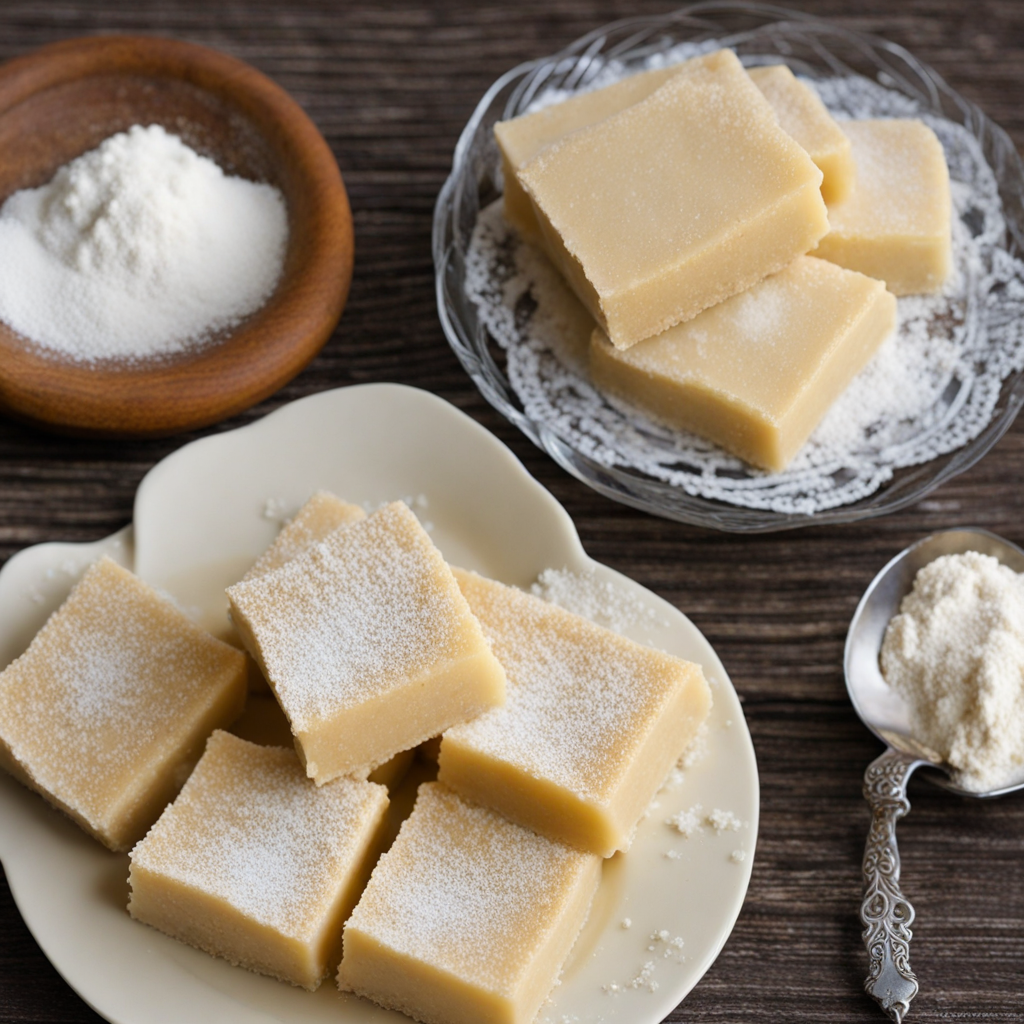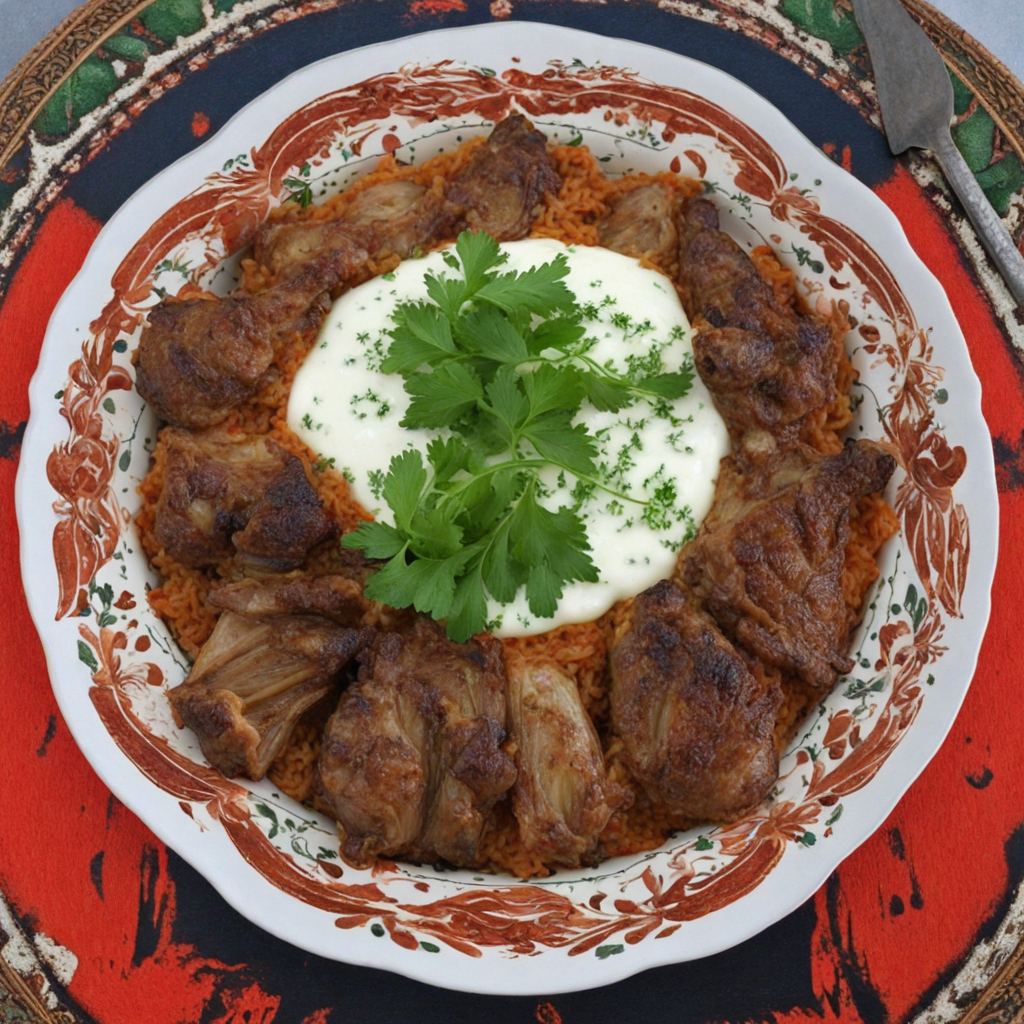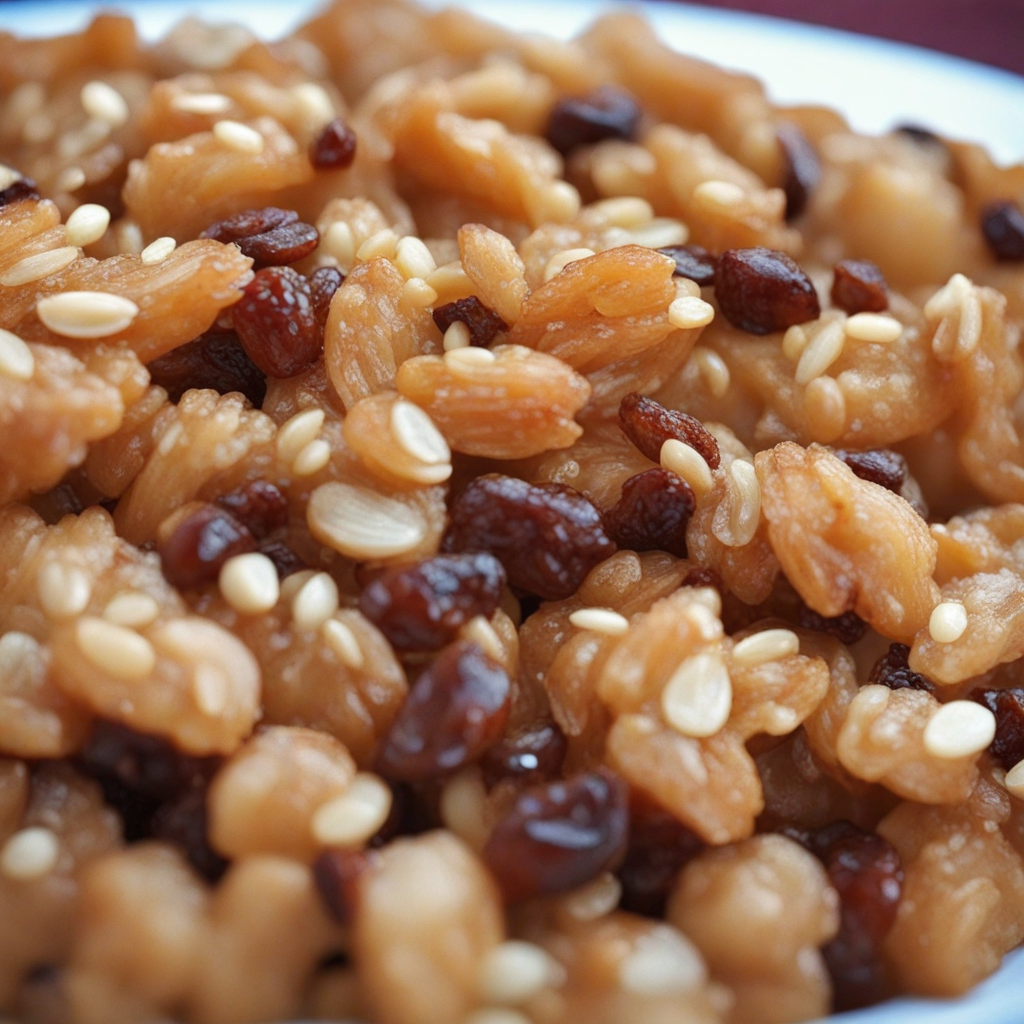Hasude
Hasude is a traditional Albanian dish that captivates the palate with its unique blend of flavors and textures. At its core, Hasude is a hearty stew made primarily from legumes, often featuring a base of kidney beans or chickpeas, which are simmered slowly to create a rich, savory broth. The addition of fresh vegetables, such as carrots, onions, and bell peppers, contributes a delightful sweetness that balances the earthy tones of the beans. Spices like paprika and bay leaves infuse the dish with warmth, while a hint of garlic adds depth to every bite, making Hasude a comforting choice for any meal. The preparation of Hasude is a labor of love, often passed down through generations in Albanian households. Traditionally cooked in a large pot, the dish is allowed to bubble away for hours, allowing the flavors to meld beautifully. The slow-cooking process results in a thick, luscious stew that can be served as a main course or a side dish, perfect for sharing among family and friends. It’s commonly accompanied by crusty bread or polenta, which helps to soak up the rich broth, making each mouthful a satisfying experience. One of the most delightful aspects of Hasude is its versatility. While the classic recipe remains a beloved staple, variations exist depending on local ingredients and personal preferences. Some versions may include smoked meats or sausages, adding a smoky richness to the dish, while vegetarian adaptations showcase seasonal vegetables and herbs, enhancing the dish's freshness. Whether enjoyed in a cozy home or at a festive gathering, Hasude invites food lovers to explore the heart of Albanian cuisine, offering a taste that is both familiar and intriguingly new.
How It Became This Dish
The Culinary Heritage of Hasude: A Glimpse into Albanian Tradition Hasude, a traditional dish from Albania, encapsulates the rich tapestry of Albanian culture and history. Rooted in the mountainous regions and deeply tied to the rural lifestyle, Hasude is more than just a culinary delight; it is a symbol of community, tradition, and the profound connection between the Albanian people and their land. #### Origins of Hasude The origins of Hasude can be traced back to the ancient pastoral societies of the Illyrians, the ancestors of modern Albanians. The Illyrians were known for their agrarian lifestyle, relying heavily on locally sourced ingredients. As a dish, Hasude is primarily composed of cornmeal, water, and often enriched with yogurt, making it not only nutritious but also reflective of the simple yet hearty diet of the region's inhabitants. Corn, introduced to Europe from the Americas in the late 15th century, quickly became a staple in Albanian cuisine due to its adaptability to the local climate and soil conditions. This transformation of the diet, marked by the incorporation of corn, coincided with the historical shifts in Albania, including the Ottoman rule that lasted for over four centuries. During this time, food became a crucial aspect of cultural identity, and Hasude emerged as a dish that bridged the gap between various influences while retaining its distinctly Albanian character. #### Cultural Significance Hasude holds a special place in the heart of Albanian culture. Traditionally, it is associated with familial gatherings, celebrations, and even significant life events. Its preparation is often a communal activity, bringing together family members and neighbors, reflecting the communal values inherent in Albanian society. The act of making Hasude can be viewed as a ritual that fosters bonding and creates a sense of belonging among participants. In many rural communities, Hasude is served during winter months when other fresh ingredients may be scarce. Its warming properties make it a comforting dish during the cold season, reinforcing its role as a staple food that nourishes both body and spirit. Additionally, Hasude is often accompanied by traditional dairy products, such as feta cheese or yogurt, which are integral to Albanian cuisine. This pairing highlights the significance of dairy farming in the region and underscores the connection between agriculture and culinary practices. #### Development Over Time As Albania navigated through various historical epochs, Hasude evolved while maintaining its core essence. The Ottoman period introduced new spices and cooking methods, which influenced many Albanian dishes, including Hasude. The addition of ingredients such as herbs, spices, or even vegetables can be observed in modern interpretations of the dish. This adaptability speaks to the resilience of Albanian culinary traditions, which have absorbed influences without losing their identity. In the 20th century, particularly during the socialist era, Albania underwent significant changes that impacted its agricultural practices and food production. The collectivization of agriculture transformed how food was grown and consumed, and while Hasude remained a staple, its ingredients became more standardized. The focus shifted towards efficiency and mass production, which sometimes led to a loss of the local varieties and traditional methods that had characterized the dish. However, the fall of communism in the early 1990s sparked a resurgence of interest in traditional foods, including Hasude. As Albanians sought to reconnect with their cultural roots, there was a revival of traditional cooking techniques and an emphasis on local, organic ingredients. This period saw the rise of farmers' markets and local food cooperatives, making it easier for people to access the fresh, high-quality ingredients needed to prepare Hasude. Today, Hasude continues to be cherished across Albania and among the Albanian diaspora. It is often featured in family gatherings, cultural festivals, and national celebrations, serving as a reminder of the enduring connection between food and identity. As Albanian cuisine gains international recognition, dishes like Hasude are being embraced by food enthusiasts and chefs around the world, who appreciate its authenticity and the story it tells about Albanian heritage. #### Modern Interpretations and Global Influence In contemporary Albanian cuisine, Hasude has adapted to modern tastes while retaining its traditional roots. Chefs are experimenting with variations of the dish, incorporating contemporary culinary techniques and global flavors. For instance, Hasude might be paired with exotic spices or served alongside international dishes, showcasing Albania's openness to embracing culinary diversity while honoring its heritage. Moreover, the global Albanian diaspora plays a crucial role in keeping Hasude alive. Many Albanians living abroad have brought their culinary traditions with them, introducing Hasude to new audiences and ensuring that younger generations remain connected to their cultural roots. Food has become a powerful medium for storytelling, allowing Albanians to share their history, values, and identity with the world. #### Conclusion In conclusion, Hasude stands as a testament to the resilience and richness of Albanian culinary heritage. Its origins reflect a deep connection to the land and its resources, while its cultural significance is woven into the fabric of family and community life. As Albania continues to evolve, Hasude remains a cherished dish that bridges the past with the present, highlighting the importance of tradition in a rapidly changing world. Through its flavors and history, Hasude invites everyone to partake in the story of Albania—a story rooted in the earth, enriched by culture, and celebrated through food.
You may like
Discover local flavors from Albania







